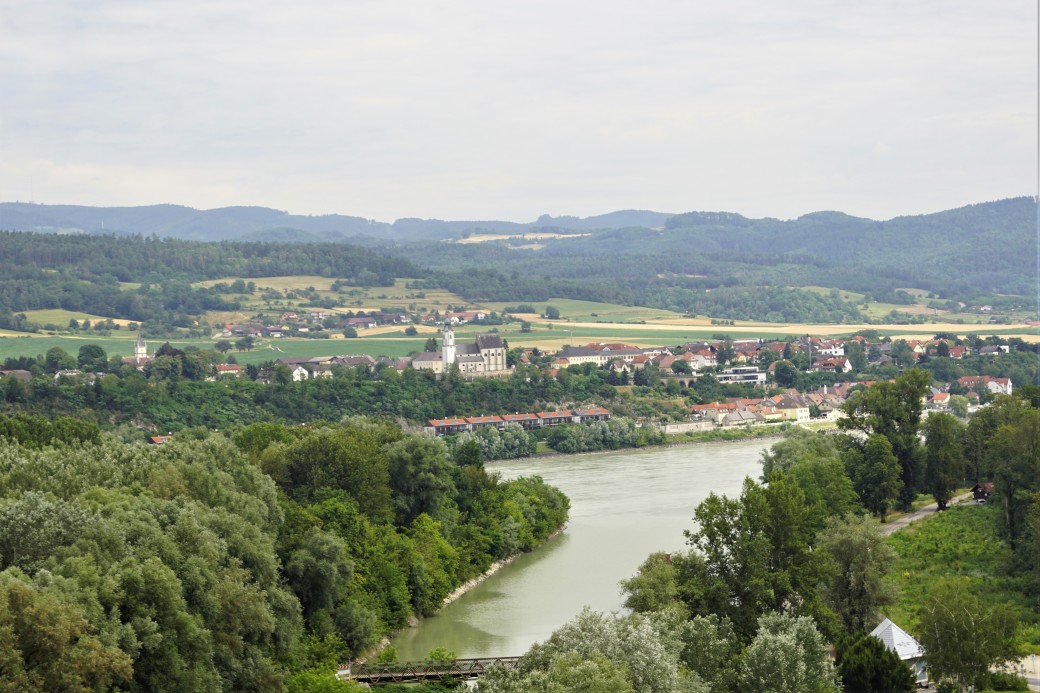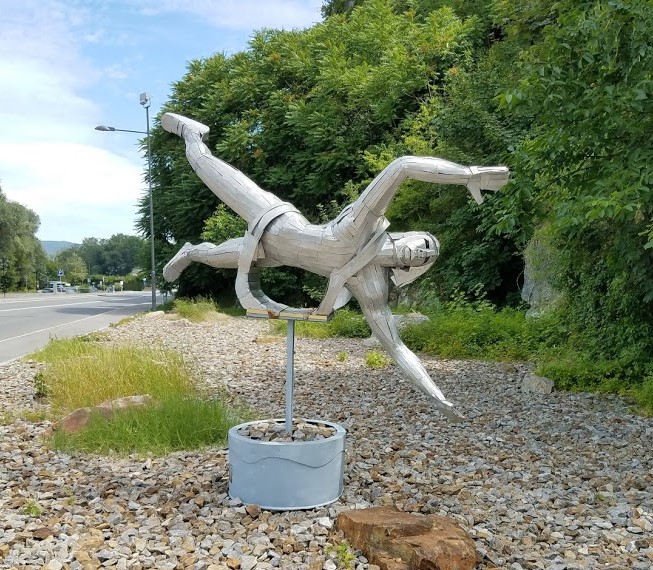July 5, 2019
Today we docked at Melk, a town on the Danube known for its abbey, which sits on a cliff overlooking the town. A bus drove us up the hill to tour the abbey.
The Benedictine abbey was founded in 1089. A monastic school was established in the 12th century and the library soon became renowned for its extensive collection of manuscripts.
The Baroque abbey seen today was built between 1702 and 1736. Particularly noteworthy are the frescoes painted by Austrian artist Johann Michael Rottmayr and the medieval manuscript collection which includes a famous collection of music manuscripts.
 Frescoes in the library were painted by Paul Troger, distinguished by their pastel colors and dramatic sense of movement. We could not take photos inside the abbey but I took many of the exterior, with its views of the town and beautiful gardens.
Frescoes in the library were painted by Paul Troger, distinguished by their pastel colors and dramatic sense of movement. We could not take photos inside the abbey but I took many of the exterior, with its views of the town and beautiful gardens.



The abbey managed to escape a series of threats, such as dissolution under Emperor Joseph II when many other abbeys were seized and dissolved between 1780 and 1790, because of its fame and academic stature; and during the Napoleonic Wars. When Austria was incorporated into Nazi Germany in 1938, the school and a large part of the abbey were taken over by the state.
The school was returned to the jurisdiction of the abbey after World War II and it continues in operation to this day, with an enrollment of 900 students of both genders.
Melk Abbey has been mentioned or featured in several works of literature and films.

Bad Ischl clock (c. 1810), made entirely from 10 kinds of wood, including pear, walnut, beech, linder, maple, ash, oak, Scotch pine, larch, and European spindle tree. After repairs in 1970, some metal parts were installed, such as the middle spring and middle bar.
Entryways (aka doorways)…
Looking down on the entrance to the abbey…
Views from the upper patio of the abbey





Scattered around the gardens were whimsical sculptures of animals.



Abbey mascot? I found this friendly Manx cat just chillin’ in the front courtyard of the abbey. She didn’t appear at all fazed by the crowds of tourists. I speculated that her home was one of the houses that are located on the hill just below the abbey.

By the time I saw this cat, I had determined to walk back to the ship – it was all downhill and I could use the exercise. Dale didn’t want to walk, however, so I left him to take the bus back.
I was looking forward to taking a lot of photos of the town, which I did, but in the end, I got lost and ended up having to ask for directions and backtrack to get back to the ship.
On my way downhill, meanwhile, I saw restaurants and small patios wedged between houses on the hillside.



As I descended, I passed through the main commercial area, lined with restaurants and tourist shops. And one shop that sold lederhosen!




And there were a few interesting doors, to satisfy Norm’s Thursday Doors aficionados…




Flower-decorated balconies…


Sculptures and installations…


The Tower of Babel at the Sommerspiele Melk, made of approximately 30,000 Bioblo building blocks.
Close-up of Bioblo blocks (including Bioblo doors! 😉 )

Finally, I reached the bar/restaurant/souvenir shop where we had gathered to get on the bus at the beginning of the tour. (When I saw it, I remembered it…”Oh, yeah!!”)

From behind this building, it was a short hike along the river dock back to the ship! What a relief!












